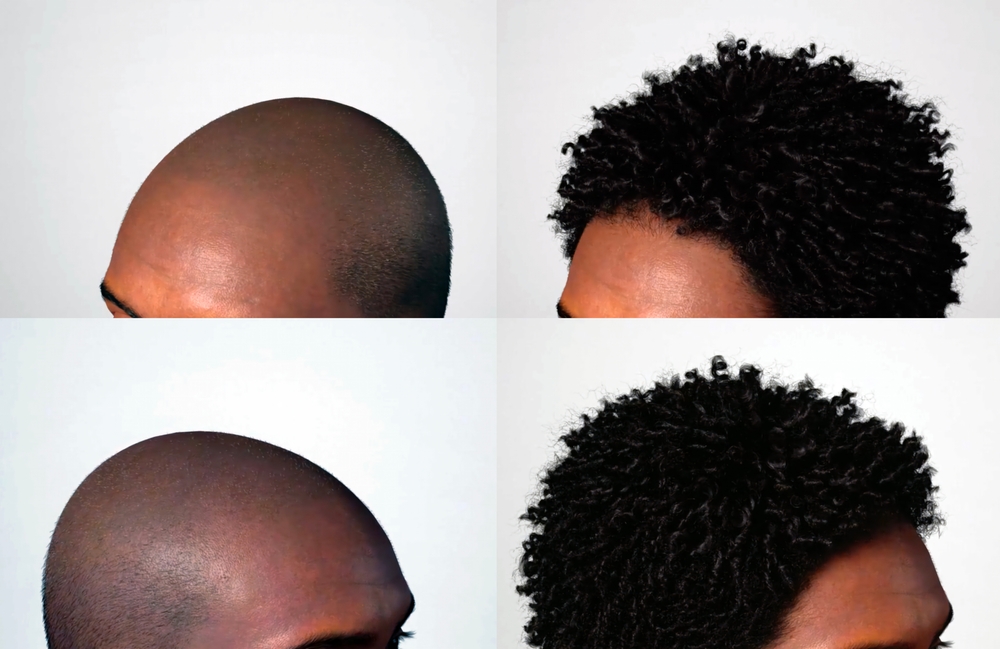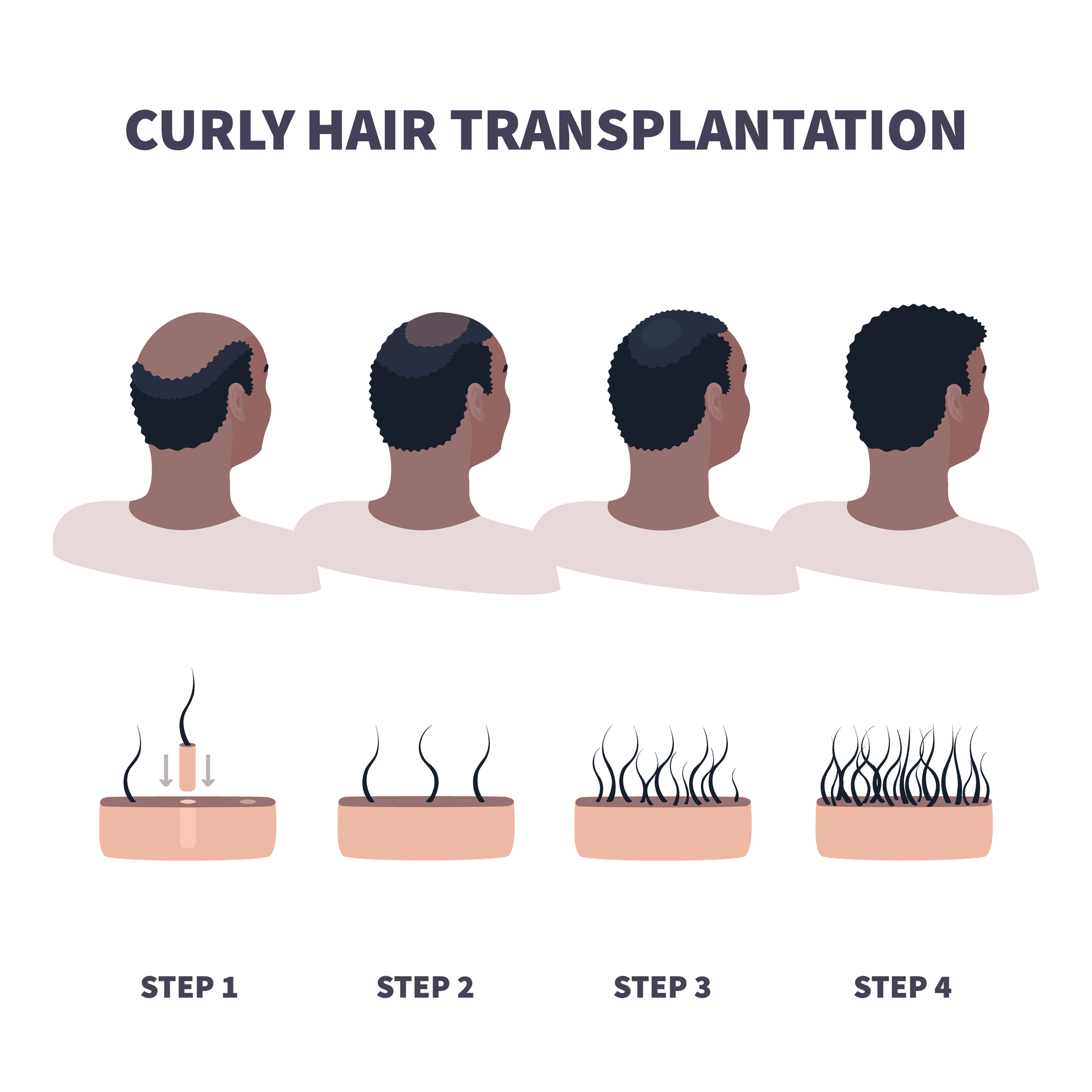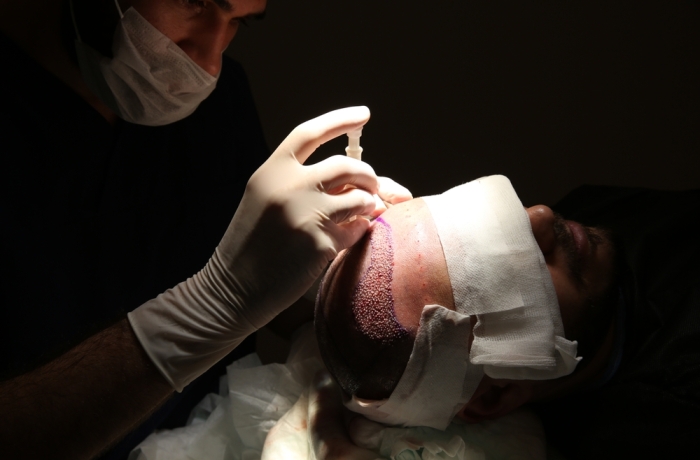In this article, we will be discussing everything you need to know about Afro hair transplant in Turkey, including the best hair transplant techniques, the success rate of the procedure, the cost of the procedure, and more. We aim to provide you with comprehensive information so you can make an informed decision about whether Afro hair transplant is right for you.
If you are looking for a solution for your hair loss, we encourage you to continue reading to learn more about Afro hair transplant and how we can help you achieve the look you desire.
Hair transplant surgery is a surgical procedure that involves transplanting hair follicles from a donor area to a recipient area. The donor area is usually the back of the scalp, where hair is denser and less susceptible to hair loss. The recipient area is where the patient is experiencing hair loss or thinning.

There are two main types of hair transplant procedures available: Follicular Unit Extraction (FUE) and Follicular Unit Transplantation (FUT). FUE involves extracting individual hair follicles from the donor area and transplanting them to the recipient area, while FUT involves removing a strip of skin from the donor area and dissecting it into individual hair follicles. To read more about this topic you can read our article about hair transplant techniques, their advantages and disadvanges.
Hair transplant surgery is different from other hair restoration methods, such as hair systems or wigs, as it involves transplanting the patient's own hair. This results in a more natural-looking and permanent solution for hair loss. Hair transplant surgery is also less invasive and has a shorter recovery period compared to other surgical procedures, such as scalp reduction or tissue expansion.
At HealTrip Global, we offer both FUE and FUT hair transplant procedures, and our experienced plastic surgeons will work with you to determine the best procedure for your individual needs. We understand the unique needs of individuals with Afro hair and have developed specialized techniques to ensure successful results.
Afro hair transplant is a specialized hair restoration procedure that requires an experienced plastic surgeon who understands the unique characteristics of Afro hair. At HealTrip Global, we use the latest techniques, including Follicular Unit Extraction (FUE) and Follicular Unit Transplantation (FUT), to achieve successful results for our patients.
During the FUE procedure, individual hair follicles are extracted from the donor area using a small instrument, such as a punch or needle. The follicles are then transplanted to the recipient area, where they will grow into healthy hair over time. This technique is less invasive than FUT and leaves minimal scarring.

FUT involves removing a strip of skin from the donor area, which is then dissected into individual follicular units and transplanted to the recipient area. This technique can be more invasive and leave a linear scar, but it can be a good option for individuals with larger areas of hair loss.
When performing Afro hair transplant, plastic surgeons need to take into account the unique characteristics of Afro hair, including its curl pattern and texture. This requires specialized techniques and equipment to ensure successful results. At HealTrip Global, our plastic surgeons have extensive experience in performing Afro hair transplant and use specialized tools to avoid damaging the fragile hair follicles.
Before undergoing Afro hair transplant, patients will need to undergo a consultation with one of our plastic surgeons, who will evaluate their hair loss and overall health. We may also perform tests to determine the quality and quantity of the patient's donor hair, which will help us develop a personalized treatment plan.
Preparing for an Afro hair transplant is an important part of the process to ensure the best possible results. Physically, patients need to be in good health and have enough hair on their scalp or donor area to be able to have the transplant. Emotionally, patients need to be prepared for the procedure, which can be a daunting prospect.
Before the procedure, patients should avoid smoking and drinking alcohol as they can negatively impact the body's ability to heal. Additionally, some medications and supplements should be avoided, and patients should inform their doctor of any medication they are taking. It is important to follow any instructions given by the doctor to ensure a safe and successful procedure.
On the day of the procedure, patients will be given instructions to follow, including washing their hair and wearing comfortable clothing. They will also have a consultation with the surgeon to discuss the procedure and any concerns they may have. The procedure usually takes several hours to complete, depending on the size of the area being transplanted.
Overall, preparing for an Afro hair transplant requires physical and emotional preparation, as well as following instructions from the doctor to ensure the best possible outcome.
While Afro hair transplant is considered a safe and effective procedure, like any surgical procedure, there are risks and potential complications involved. It is important to be aware of these risks before deciding to undergo the procedure.
The risks of Afro hair transplant include bleeding, infection, scarring, and damage to surrounding tissues. Additionally, patients may experience swelling, bruising, and discomfort in the treatment area after the procedure. There is also a risk of poor hair growth or even hair loss, especially if the procedure is not performed by an experienced surgeon.
To mitigate these risks, it is important to carefully select a qualified and experienced surgeon who has a track record of successful Afro hair transplants. It is also essential to follow all pre- and post-operative instructions provided by the surgeon, including avoiding certain medications, not smoking, and maintaining good overall health.
In the rare event that complications do arise, patients should contact their surgeon immediately for guidance on how to manage the issue. Early intervention can help prevent more serious complications and ensure the best possible outcome from the procedure.
After the procedure, the patient will be given detailed instructions on how to care for their scalp and hair during the recovery period. It is important to follow these instructions to ensure proper healing and successful hair growth.
During the first few days after the procedure, there may be some swelling and discomfort in the scalp. This is normal and can be managed with pain medication prescribed by the surgeon. The patient may also experience scabbing and crusting around the transplanted hair follicles. This will typically go away after a week or so.
It is important to avoid strenuous physical activity for at least a week after the procedure to prevent any damage to the newly transplanted hair follicles. The patient should also avoid wearing any tight hats or head coverings during this time.
In the weeks and months following the procedure, the transplanted hair follicles will begin to grow new hair. The growth rate varies from person to person, but most patients start to see noticeable results within 3-6 months. It can take up to a year for the full results to be seen.
To ensure the best possible outcome, patients should follow a healthy lifestyle, including a balanced diet and regular exercise. They should also avoid smoking and limit alcohol consumption.
Before and after photos of Afro hair transplant patients can be a useful tool in understanding the potential results of the procedure. Patients should ask their surgeon for examples of their previous work and discuss their expectations for the outcome.
Overall, with proper care and attention during the recovery period, patients can expect to have successful hair growth and a natural-looking hairline after an Afro hair transplant.
In conclusion, Afro hair transplant is a safe and effective solution for those with Afro hair who are experiencing hair loss. With the use of FUE and FUT techniques, the procedure can successfully restore hair growth in the affected areas. It is important to carefully prepare for the procedure and follow aftercare instructions for optimal healing and hair growth. The risks and complications associated with the procedure can be mitigated with proper care and attention.
If you are considering Afro hair transplant, it is important to do your research and choose a reputable clinic with experienced surgeons. Turkey has become a popular destination for hair transplant procedures, and HealTrip Global can assist you in finding the right clinic and surgeon for your needs. With competitive prices and high-quality care, Turkey is a great option for those seeking Afro hair transplant.
Afro hair has unique characteristics, including tight curls and a coarser texture, which can make it more challenging to transplant compared to other hair types. However, with specialized techniques and experienced plastic surgeons, successful results can be achieved.
Common hair loss issues faced by people with Afro hair include traction alopecia, which is caused by tight hairstyles that pull on the hair, and central centrifugal cicatricial alopecia, which is a type of scarring hair loss that affects the crown of the head. Other causes of hair loss in individuals with Afro hair include genetics, hormonal changes, and certain medical conditions.
If you are experiencing hair loss or thinning and have Afro hair, you may be a suitable candidate for Afro hair transplant. The best candidates are those with healthy donor hair follicles, which can be transplanted to the recipient area. Additionally, candidates should be in good overall health and have realistic expectations for the outcome of the procedure.
At HealTrip Global, our experienced plastic surgeons will conduct a thorough evaluation of your hair loss and overall health to determine if Afro hair transplant is the right solution for you. We understand the unique needs of individuals with Afro hair and will develop a personalized treatment plan to achieve successful results.

After the procedure, the patient will be given detailed instructions on how to care for their scalp and hair during the recovery period. It is important to follow these instructions to ensure proper healing and successful hair growth.
During the first few days after the procedure, there may be some swelling and discomfort in the scalp. This is normal and can be managed with pain medication prescribed by the surgeon. The patient may also experience scabbing and crusting around the transplanted hair follicles. This will typically go away after a week or so.
It is important to avoid strenuous physical activity for at least a week after the procedure to prevent any damage to the newly transplanted hair follicles. The patient should also avoid wearing any tight hats or head coverings during this time.
In the weeks and months following the procedure, the transplanted hair follicles will begin to grow new hair. The growth rate varies from person to person, but most patients start to see noticeable results within 3-6 months. It can take up to a year for the full results to be seen.
To ensure the best possible outcome, patients should follow a healthy lifestyle, including a balanced diet and regular exercise. They should also avoid smoking and limit alcohol consumption.
Before and after photos of Afro hair transplant patients can be a useful tool in understanding the potential results of the procedure. Patients should ask their surgeon for examples of their previous work and discuss their expectations for the outcome.
Overall, with proper care and attention during the recovery period, patients can expect to have successful hair growth and a natural-looking hairline after an Afro hair transplant.
Sonuç olarak, Afro saç dökülmesi yaşayan Afro saçlı kişiler için güvenli ve etkili bir çözümdür. FUE ve FUT teknikleri kullanılarak, işlem etkilenen bölgelerde saç büyümesini başarıyla geri getirebilir. İşlem için dikkatli bir şekilde hazırlanmak ve iyileşme ve saç büyümesi için sonrası bakım talimatlarını izlemek önemlidir. İşlemle ilgili riskler ve komplikasyonlar uygun bakım ve dikkat ile azaltılabilir.
Afro saç nakli düşünenler için araştırma yaparak tecrübeli cerrahların bulunduğu saygın bir klinik seçmek önemlidir. Türkiye, saç nakli işlemleri için popüler bir destinasyon haline gelmiştir ve HealTrip Global ihtiyaçlarınıza uygun doğru klinik ve cerrahı bulmanıza yardımcı olabilir. Rekabetçi fiyatlar ve yüksek kaliteli bakım ile Türkiye, Afro saç nakli arayanlar için harika bir seçenektir.
>